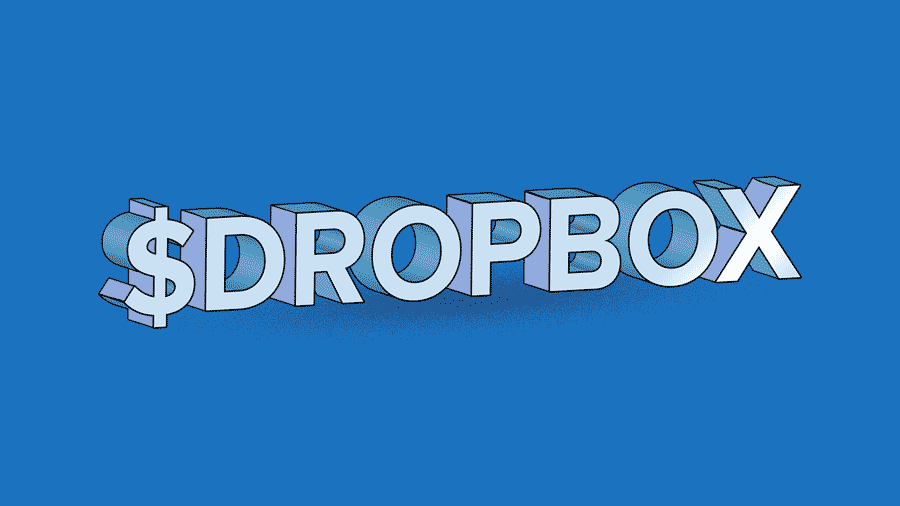We’ve been waiting for this one for a long time.
Today, Dropbox publicly filed its S-1 document on its path to the public markets, detailing its historical financial performance and providing a wealth of information for investors and the market alike. Dropbox famously raised just over $607 million in equity funding during its life, reaching a $4.05 billion post-money valuation in 2014 after its $250 million Series B round.
Follow Crunchbase News on Twitter & Facebook
The firm’s SEC filing indicates that it may raise up to $500 million in its debut, a number that is likely a placeholder.
In brief, Dropbox’s revenue rose over $1 billion in 2017, growing over 30 percent. The firm’s net loss (GAAP) fell to just over $100 million, or about half over the same period. Notably, in 2017, even as its revenue grew, Dropbox’s cost of revenue fell.
You can see its high-level performance detailed in the following chart:

The firm, as we have long known, generates cash. Quite a lot of it, as it turns out. The firm generated free cash flow of more than $300 million in 2017.
Dropbox’s financials paint the portrait of a sound SaaS player looking to go public when it doesn’t need the cash, with a history of improving operating metrics and cash generation. Underscoring the latter point, if you strip out its share-based compensation costs and Dropbox has positive earnings per share. And with historical rival Box trading near all-time highs, the Y Combinator-backed Dropbox has picked its moment well.
Let’s explore its filing in detail.
Broad Financial Results

In 2017, Dropbox had revenue of $1.11 billion, up 31 percent from its 2016 result of $844.8 million. From 2015 to 2016, for comparison, the company grew over 39 percent.
Dropbox grew its gross profit more quickly than its revenue in the last year, pushing that figure from a $454.2 million in 2016 to $737.9 million in 2017. Dropbox’s ability to expand its gross margins while also growing its top line is impressive.
The firm’s operating costs grew from $647.7 million in 2016 to $851.6 million in 2017, inclusive of share-based compensation. Throw in an $11 million interest expense, and Dropbox’s GAAP net loss came to $111.7 million in 2017. That figure was down sharply from its 2016 GAAP net loss of $210.2 million.
Dropbox spent $147.6 million on share-based compensation in 2016, and $164.6 million on the same in 2017. If you remove that cost from the firm’s costs, it generates positive, adjusted earnings per share. Investors will likely observe that figure, as well as its more traditional, fully-loaded GAAP EPS result in ensuing earnings calls.
Dropbox reports $430 million in cash and equivalents on hand in its S-1. That taken into account with its $305 million in free cash flow in 2017, it’s obvious that the company isn’t hurting for dollars on its balance sheet.
Finally on the cash question, here’s the firm’s notes on its end-of-year debt makeup:
As of December 31, 2017, we had no amounts outstanding under the revolving credit facility and an aggregate of $82.6 million in letters of credit outstanding under the revolving credit facility. Our total available borrowing capacity under the revolving credit facility was $517.4 million as of December 31, 2017.
Throw in an IPO-haul and Dropbox is very well capitalized.
User Metrics
Dropbox highlights its over 500 million registered users, only 11 million – or 2.2 percent – of which pay to use the platform. According to the filing, the number of paying users has grown from 6.5 million as of the end of 2015 to its current reported 11 million level at the end of 2017.
Net Neutrality Looms Large As Risk Factor
Moving past the raw numbers, Dropbox’s filing contains the usual host of other details.
The filing, for example, mentions net neutrality, albeit obliquely. Any future changes to how bandwidth and other measures of internet use are billed may pose a potential risk to the company, according to the document. The company lists a number of potential factors that could raise operating expenses and degrade user retention “if network operators:
- implement usage-based pricing; discount pricing for competitive products;
- otherwise materially change their pricing rates or schemes;
- charge us to deliver our traffic at certain levels or at all;
- throttle traffic based on its source or type;
- implement bandwidth caps or other usage restrictions; or otherwise try to monetize or control access to their networks.”
These risks are at the center of public concern over the US’s repeal of net neutrality rules, something that is underway during the Trump administration.
Concentration Of Voting Power
Dropbox will retain a multi-class share structure with differing voting rights. As it says in the filing:
Our Class A common stock, which is the stock we are offering in this offering, has one vote per share, our Class B common stock has ten votes per share, and our Class C common stock has no voting rights, except as otherwise required by law.
This is a similar voting structure to the one Facebook and some other technology companies have implemented in the past. This concentrates voting power in the hands of whomever holds the Class B shares, which in this case, are preferred shareholders.
The filing states that “[t]his concentrated control will limit or preclude your ability to influence corporate matters for the foreseeable future, including the election of directors, amendments of our organizational documents and any merger, consolidation, sale of all or substantially all of our assets, or other major corporate transaction requiring stockholder approval.”
Class B shares will be eligible for sale on a public stock market after the 181 day lockup period is over. However, despite saying that it “may” offer these shares for sale on an open market, there appears to be no concrete intention to do so.
What’s It Worth?
Taking all of that in mind, what is Dropbox worth? The firm’s revenue is impressive, as are its profitability metrics compared to some other SaaS players. But if its results are rosy enough for the firm to defend its $10 billion valuation is the next question it will face.
Box, a traditional rival, has enjoyed a recent run in the public markets, pushing its trailing price-sales multiple to 6.62. Using that same metric, Dropbox is worth about $7.4 billion. If you are willing to give it a premium for any particular reason or another, say, its growth pace, add another x to the figure.
At Box’s trailing price-sales plus one, Dropbox is worth $8.5 billion or so. That’s still 15 percent off its 2014 valuation. Presumably, those investors got a bit ahead of themselves. But Dropbox has managed to do what some doubted, and grow either into its valuation, or something damn close to it.
How investors price Dropbox equity will set a new benchmark in the world of SaaS. If it can command a healthy multiples premium to other SaaS players, we’ll also pick up good metrics regarding precisely what investors are willing to pay more than average for.

Stay up to date with recent funding rounds, acquisitions, and more with the Crunchbase Daily.



![Illustration of a guy watering plants with a blocked hose - Global [Dom Guzman]](https://news.crunchbase.com/wp-content/uploads/quarterly-global-3-300x168.jpg)
67.1K Followers